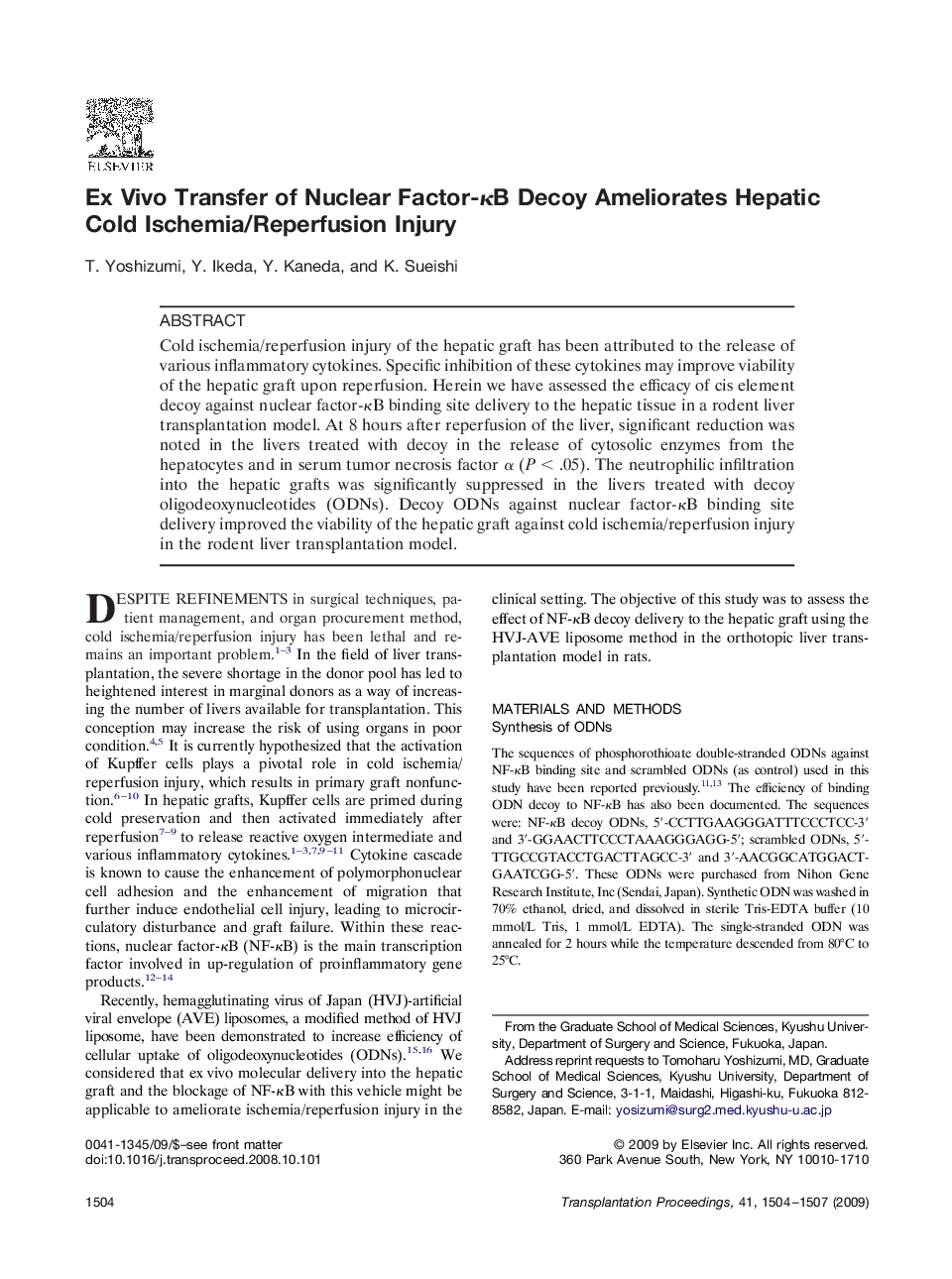| Article ID | Journal | Published Year | Pages | File Type |
|---|---|---|---|---|
| 4259224 | Transplantation Proceedings | 2009 | 4 Pages |
Cold ischemia/reperfusion injury of the hepatic graft has been attributed to the release of various inflammatory cytokines. Specific inhibition of these cytokines may improve viability of the hepatic graft upon reperfusion. Herein we have assessed the efficacy of cis element decoy against nuclear factor-κB binding site delivery to the hepatic tissue in a rodent liver transplantation model. At 8 hours after reperfusion of the liver, significant reduction was noted in the livers treated with decoy in the release of cytosolic enzymes from the hepatocytes and in serum tumor necrosis factor α (P < .05). The neutrophilic infiltration into the hepatic grafts was significantly suppressed in the livers treated with decoy oligodeoxynucleotides (ODNs). Decoy ODNs against nuclear factor-κB binding site delivery improved the viability of the hepatic graft against cold ischemia/reperfusion injury in the rodent liver transplantation model.
